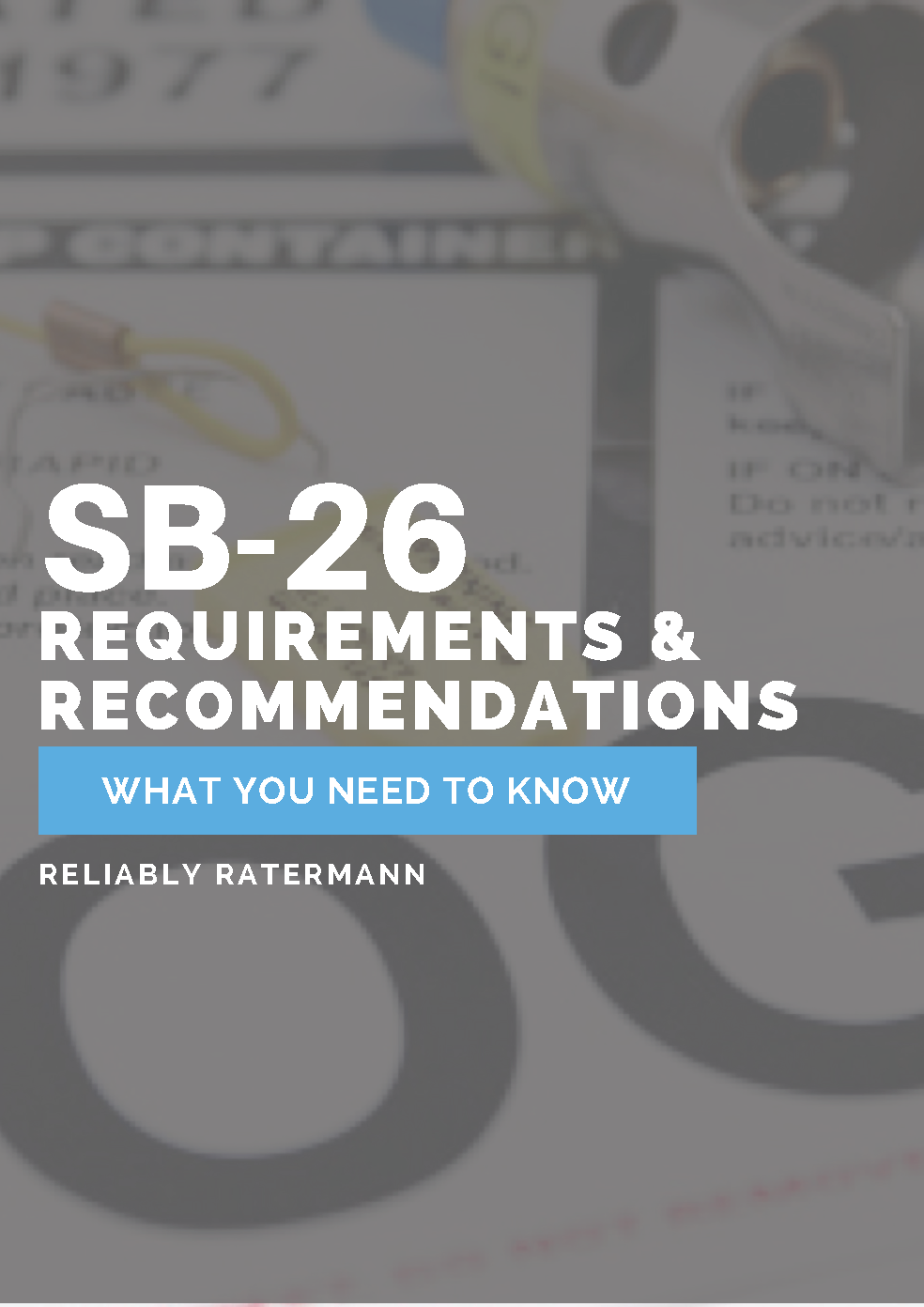Ratermann Learning Center
A hub providing relevant information and updates on industrial gas, cryogenics, and CGA regulations, as well as industry specific solutions for fill plants, beverage distribution and medical gas supplies.

By:
Ratermann Manufacturing Inc.
March 30th, 2021

By:
Ratermann Manufacturing Inc.
March 25th, 2021

Refresh your understanding of the critical preventive measures that have been shown to save lives by subscribing to our blog for a free download of our guide: Ratermann's guide to SB-26 & our reccomendations to prevent gas mix-ups.

By:
Ratermann Manufacturing Inc.
March 11th, 2021
Ratermann Manufacturing is pleased to announce the following promotions:

By:
Ratermann Manufacturing Inc.
February 10th, 2021
Ratermann Manufacturing is pleased to announce the following promotions: Deonta Johnson has been promoted to production manager of the label and custom print department in Nashville, TN. Director, Mary Carter explains, " Deonta constantly exhibits great leadership and drive. In times when the cards seem stacked, Deonta, with a smile, sees it as “not a problem” and routinely makes the impossible, possible. I know he will flourish in the role and will be a driving force in the department’s success in its initiatives for growth." Angel Lopez has been promoted to the Houston Warehouse Manager. "Angel did a tremendous job of running Ratermann Manufacturing's Livermore, California warehouse for the past decade. Angel and his family have relocated to Houston, TX where Angel has opened the Houston, TX cryogenic warehouse that also supplies core Ratermann products to customers. Angel always shows great leadership and goes above and beyond to uphold Ratermann's promise of reliable delivery!" - Paul Fenner, Distribution Manager ABOUT RATERMANN MANUFACTURING: Family owned Ratermann Manufacturing, Inc., headquartered in the San Francisco Bay Area with strategic locations in Houston and Nashville and has been the leading supplier in the industrial gas and cryogenics industry for over 20 years. Media contact: Marie Ratermann 213-500-1791 marie@rmimfg.com

By:
Ratermann Manufacturing Inc.
January 27th, 2021
Ratermann Manufacturing is pleased to announce the following promotions. Mary Carter and Marie Ratermann have taken on the additional responsibilities of Director of Business Development. “These promotions will help support our ongoing growth objectives as we continue to invest and grow our business,” said Steve Byers, Vice President of Business Development. “Both Mary and Marie have worked in many facets of our business and have earned these promotions. I am excited to have them on the front line supporting and helping provide solutions to our customers”. ABOUT RATERMANN MANUFACTURING: Family owned Ratermann Manufacturing, Inc., headquartered in the San Francisco Bay Area with strategic locations in Houston and Nashville and has been the leading supplier in the industrial gas and cryogenics industry for over 20 years. Media contact: Marie Ratermann 213-500-1791 marie@rmimfg.com

By:
Ratermann Manufacturing Inc.
January 12th, 2021
Marie Ratermann and Mary Carter of Ratermann Manufacturing launch a women’s networking and professional growth group for gas distributors and association employees.